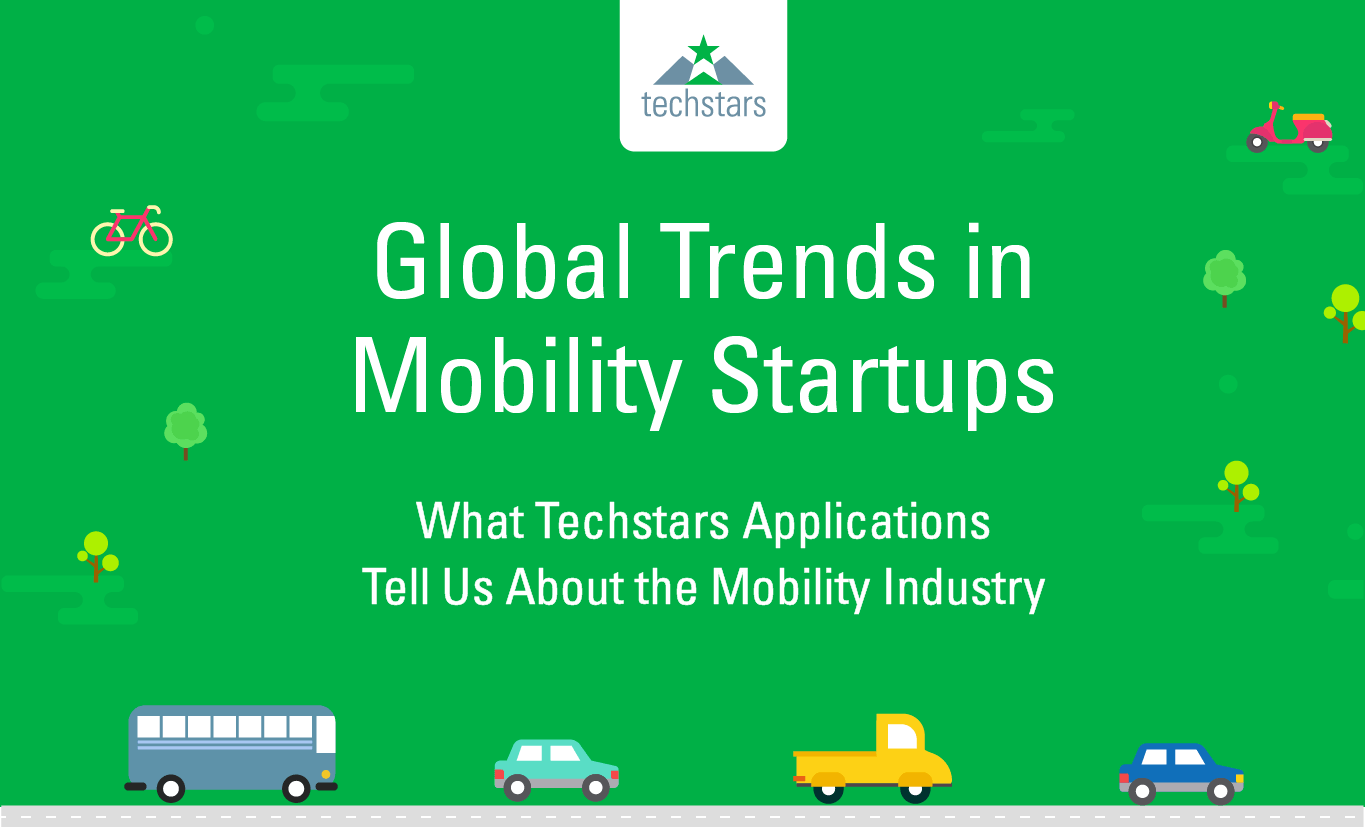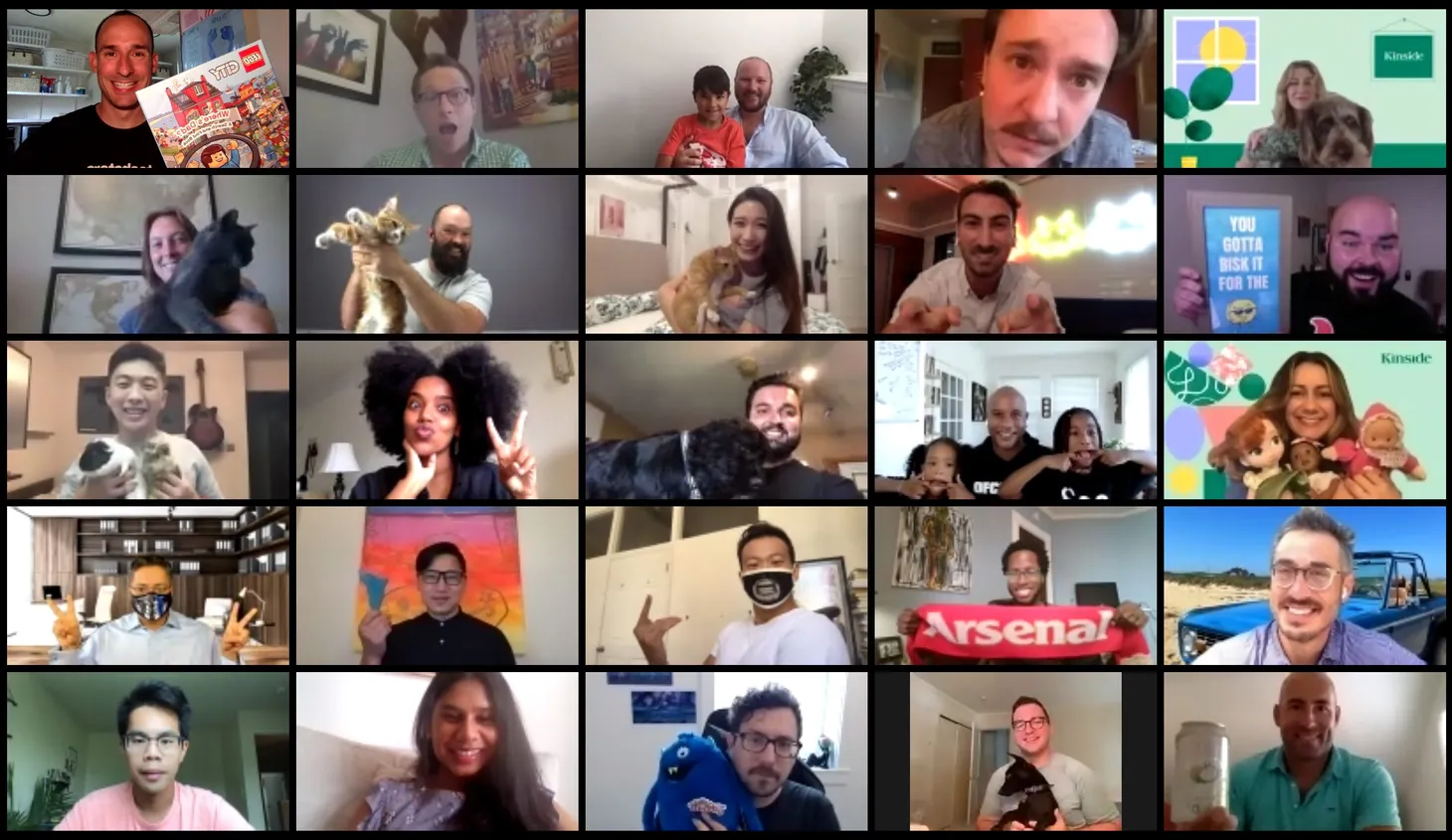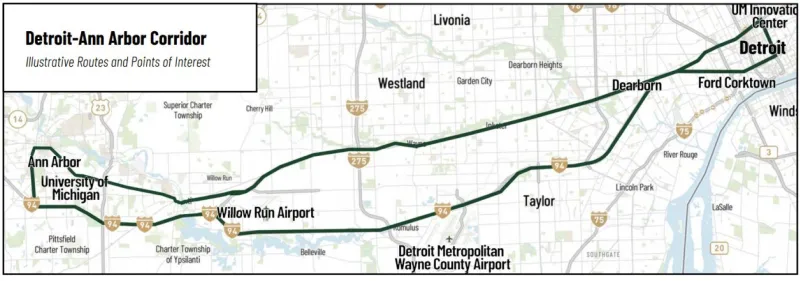Analyzing the 2016 Global Trends in Applications to Techstars Mobility
A quick analysis of the data from sourcing startups and reading applications since launching the 2016 Techstars Mobility program.
As we enter week six of Techstars Mobility, I thought it’d be fun to analyze the data from sourcing startups and reading applications since launching the 2016 Techstars Mobility program.
We read a ton of applications and met a lot of great founders from all around the world. These conversations led to fascinating insights and trends.

2016 Applications and Interviews
In 2016, we saw a 27% increase in total applications from 2015. But more importantly, we saw a 44% increase in mobility-focused applications. These are applications that align with how I define mobility for the automotive industry. What’s remarkable about this is the program has only been running for 16 months (here’s my post announcing it back in Dec of 2014). Do more faster indeed!
The quality of applications was also up. While harder to measure, it became quite clear the 2016 applications were from companies that were farther along in their businesses. They had either more revenue or funds raised, as compared to the 2015 applications.
We didn’t just spend a lot of time reading applications in 2016, we also spent a lot of time meeting and talking with founders.
- From January to March of 2016, over 1837 individuals attended one of our 14 recruiting and marketing eventsaround the United States. From CES to the Detroit Auto Show to SxSw, we met a lot of incredible mobility startup folks around the country.
- From March 20 through May 6, we interviewed 112 startups. We spent 1874 minutes in person and/or via video talking with founders about their mobility and automotive businesses.
Worldwide Response
The worldwide response for Techstars Mobility has blown us away.
Applications to Techstars Mobility came from 52 countries across 6 continents. This represented a 26% increase in international companies compared to 2015.
The Top 10 locations to apply to Techstars Mobility in 2016 were:
- United States
- United Kingdom
- Canada and India [tied]
- Germany and Russia [tied]
- Ukraine
- Spain
- Mexico and Israel and France [tied]
When we drill down further, we see that only 19 startups from Michigan applied to Techstars Mobility. Put another way, we saw more applications from Eastern Europe than we did our own home state, the center of the automotive world!
While surprising in comparison, in my opinion, this is actually a great observation. The demand of high quality automotive mobility startups wanting to be in Michigan is much greater than our own supply. This is great signal that the rest of the world wants to build their future mobility solutions right here in Detroit. The entrepreneurial gold rush in Detroit is quite appealing.
Trends in Mobility Startup Applications
What’s most fascinating is the type of technologies and businesses these startups are building.
When a sector as hot as mobility and automotive emerges, we often see copycats and imitators emerge. Our data is insightful because it shows:
- What areas of the automotive mobility industry have the lowest barriers to entry?
- What problems still exist without widespread adoption of solutions?
- What are the gaps in the automotive and mobility market that startups aren’t pursuing?
Looking at our 2016 applications, here were the most common themes in order:
- Ride sharing — Getting from point to A to point B. Automobiles, vans, buses, bicycles from local, city-to-city, and even long distance. Lots of new and innovative models.
- Customer Experience — Everything around the experience of car ownership and the entire lifecycle: buying/leasing -> maintenance -> selling.
- Safety / Distracted Driving — Lots of innovative ideas in this space, for both consumer and enterprise fleet management.
- Journey Planning / Navigation — There are still a lot of fundamental problems with planning trips, whether local, long distance, or international. Different modes of transportation and siloed data sources still make this process harder than it should be.
- V2X / Connectivity / Urban Environments — The density in urban environments enables all sorts of new technology and businesses. Connecting vehicles to X things around the vehicle (other vehicles, parking, infrastructure, etc.). Maintaining connectivity when underground or blocked by tall buildings is of huge importance as well.
- Personal Mobility — Fun new ways to get around from electric scooters to personal hyper loops!
- Electric Vehicles — Electric vehicles radically transform the way vehicles are built and operate. Lots of innovative ideas in this sector.
- Logistics / On Demand — Using big data and analytics to improve last mile delivery and logistics.
- Trucking — The backbone of the American manufacturing economy, we saw a lot of innovative ideas tackling the trucking industry around efficiency and fleet management.
- Manufacturing — Lightweighting and new technologies to improve the manufacturing of vehicles.
- Drones — And just missing the top 10, but still on the list, the wonderful world of drones.
Insights and Takeaways
What we learned was just as fascinating as the conversations we had with founders throughout 2016.
- The lack of autonomous and self-driving startup applications was surprising but can easily be explained. Building a self-driving startup is hard. Very hard. From artificial intelligence to deep learning to sensor design, this is complex stuff. Fortunately, we were able to select a couple startups in this space including both Braiq and Algocian.
- Many startups are incorporating artificial intelligence and big data to tackle all aspects of transportation. Transportation is a complex system, it’s great to see that startups are using cutting edge technology to start to solve a variety of transportation problems.
- Startups were embracing Tesla as a platform. This was quite fascinating. Because of Telsa’s entirely different model in both building and selling their cars, startups were using this as an opportunity to exploit new business models. I expect we’ll see more of this when GM unveils their Bolt this fall.
- Following the electric vehicle trend, we noticed there were many startups building their own electric vehicles. When you go from a combustion engine to an electric engine, a lot of the mechanical complexity goes away. Startups were embracing building an electric vehicle as they would a software company. Similar in approach to how Telsa builds their vehicles. This is the edge of the oncoming personalization and 3D printed transportation vehicles that we will see much more of.
- Startups were also embracing new business models and transportation services targeted towards Millennial and Gen-Z owners. With the rise of the sharing economy and growing urbanization, new businesses will emerge at the intersection of these mega-trends.
- There is a huge demand from mobility and automotive startups that want to come to Detroit and build their companies here. This is evident through conversations with 100s of startups and 96% of applicants being outside the Michigan region. It’s quite reassuring that Techstars Mobility is on to something here by operating at the intersection of Detroit’s biggest strengths: its automotive dominance and its entrepreneurial resurgence.
The startups we chose for our 2016 class were primarily focused in these 4 mobility themes: connected, shared, autonomous and electric. Check out the full list of the 2016 Techstars Mobility companies here.
And if you’d like to attend our demo day on Sep 8, in downtown Detroit, and meet these companies, send me a note. We’re expecting over 1000 individuals from 50 different automotive and transportation companies and investment funds like we did for our 2015 demo day. See you there!
Ted Serbinski Newsletter
Join the newsletter to receive the latest updates in your inbox.


